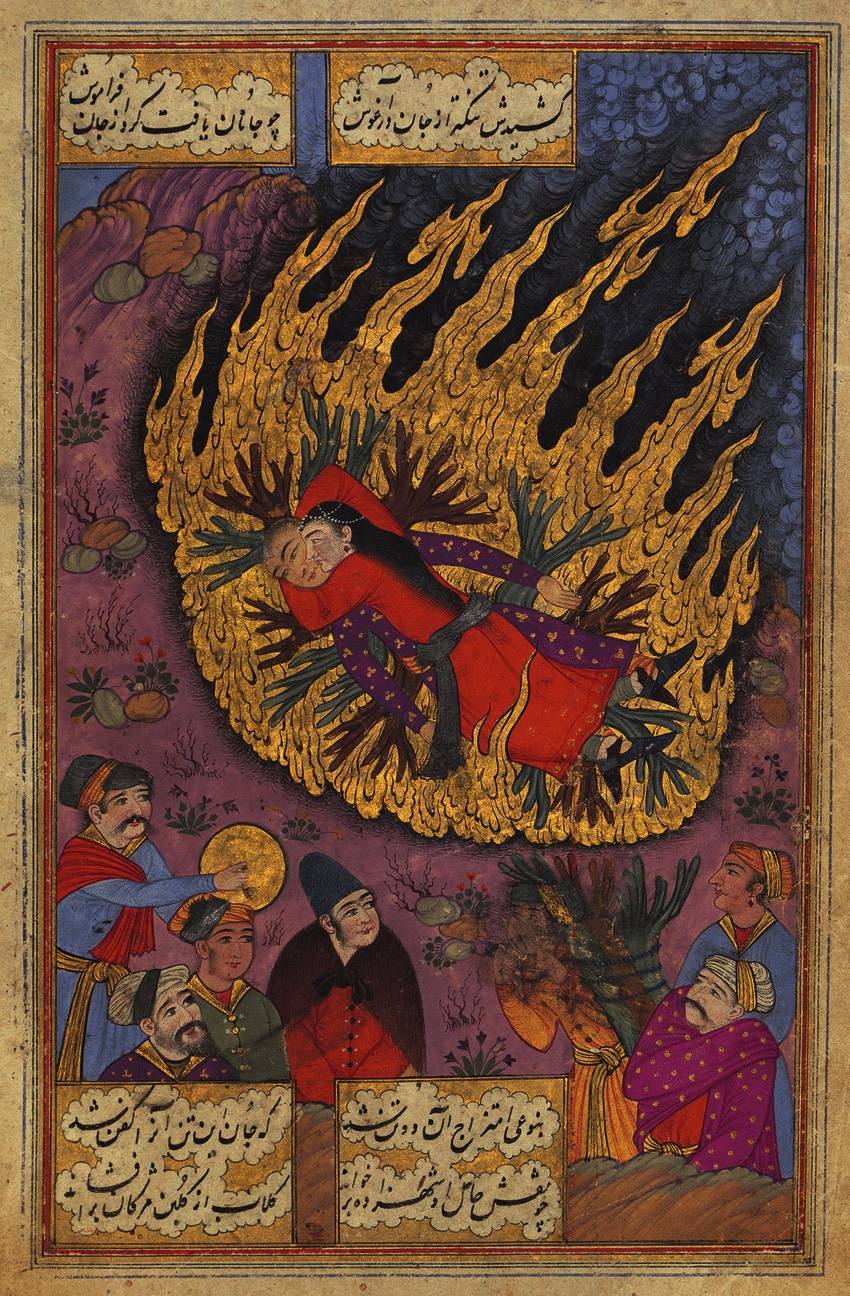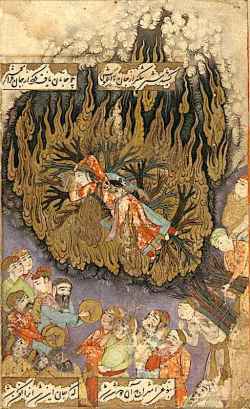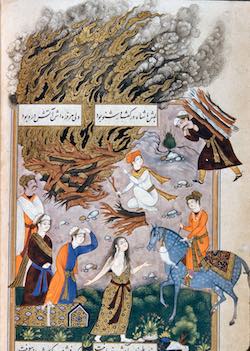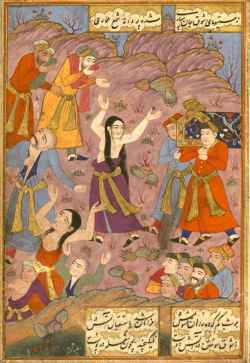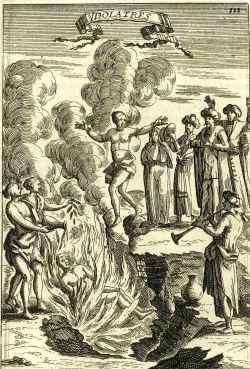Satī, from a Sūz u Gudāz manuscript. The union of the couple on the pyre
Year: 1657
From: Sūz u Gudāz ms, Iran, Walters Manuscript W. 649, fol. 19b (Burning and Melting)
Location: The Walters Art Museum, Baltimore, Maryland
External link: art.thewalters.org
Topics:
2. Sacrifice and religion: Comparisons, Antiquarians, Anthropology (16th-18th Century) 5. Sacrifices of self: Martyrology and crusades including Reconquista (12th-20th Century)
2. Sacrifice and religion: Comparisons, Antiquarians, Anthropology (16th-18th Century) 5. Sacrifices of self: Martyrology and crusades including Reconquista (12th-20th Century)
Edited by: Chiara Petrolini
Related Documents:
Scene of a Sati, with a woman throwing herself into the flames amid a crowd playing trumpets. Above, a winged devil holds the banner with the book's title and the torch with which he lights the ritual fire. (1670)
from: Abraham Rogerius, Le Théâtre de l’idolatrie ou la porte ouverte, Amsterdam, Jean Schipper, 1670, title page
Satī. The bride immolates herself on the funeral pyre (1657)
from: Isfahan, Iran
The Israel Museum, Jerusalem
Satī, from a Sūz u Gudāz manuscript. The pyre; the bride preparing to sacrifice herself (1650)
from: Nawʻi Khabushani, Muhammad Riz̤a, Sūz u Gudāz, fol. 31v
Chester Betty Library, Dublin, Ireland MS Pers 268, fol. 31b
the young Hindu woman accompanies her bridegroom's coffin to the funeral pyre and decides to commit sati (1657)
from: Walters manuscript W.649 (Burning and Melting)
The Walters Art Museum
Idolatres (1685)
from: Allain Manesson Mallet, Description de l'Univers, , contenant les differents systêmes du monde, les cartes générals et particulières de la géographie ancienne et modern. Vol.: De l'Asie.

